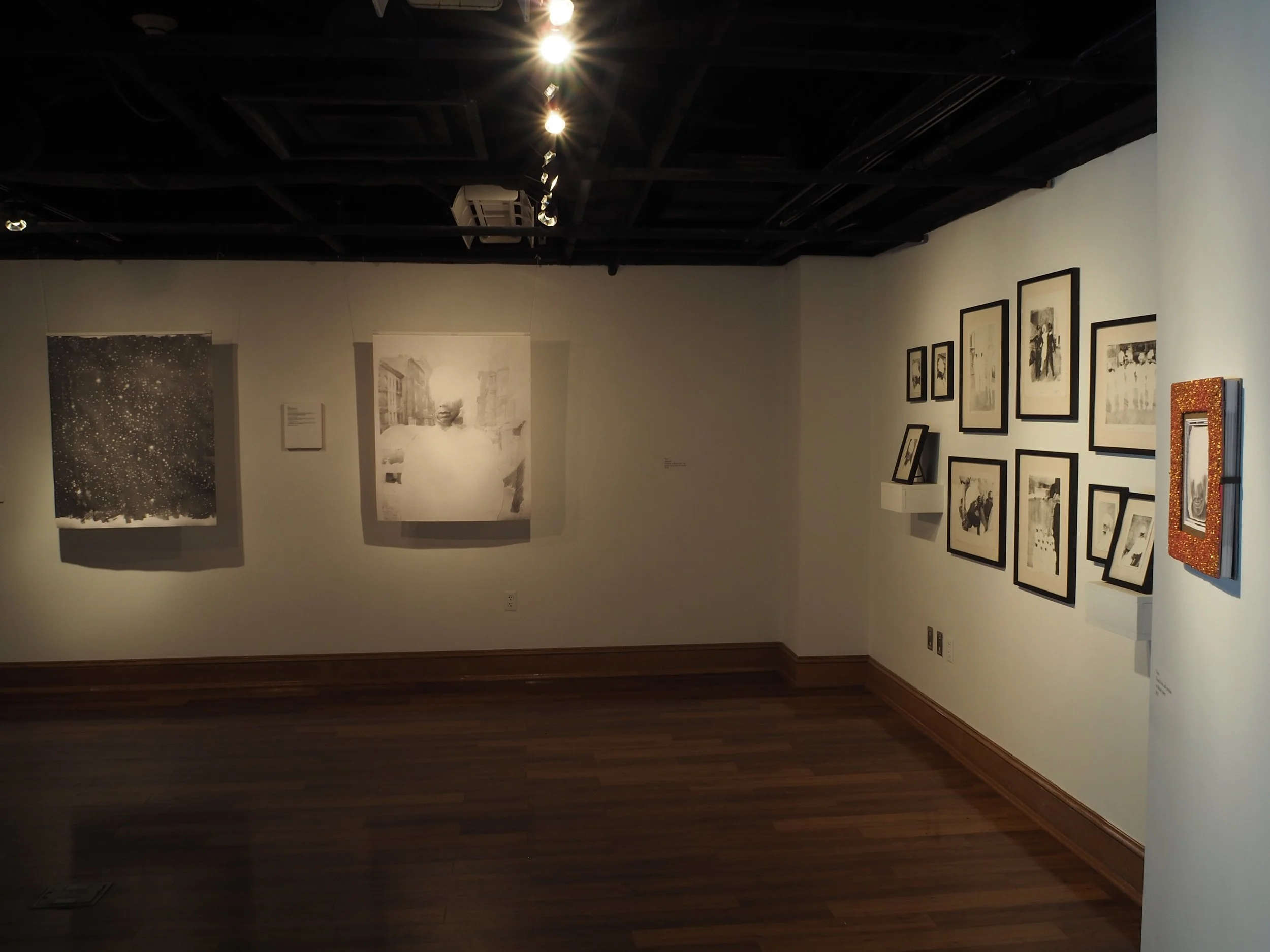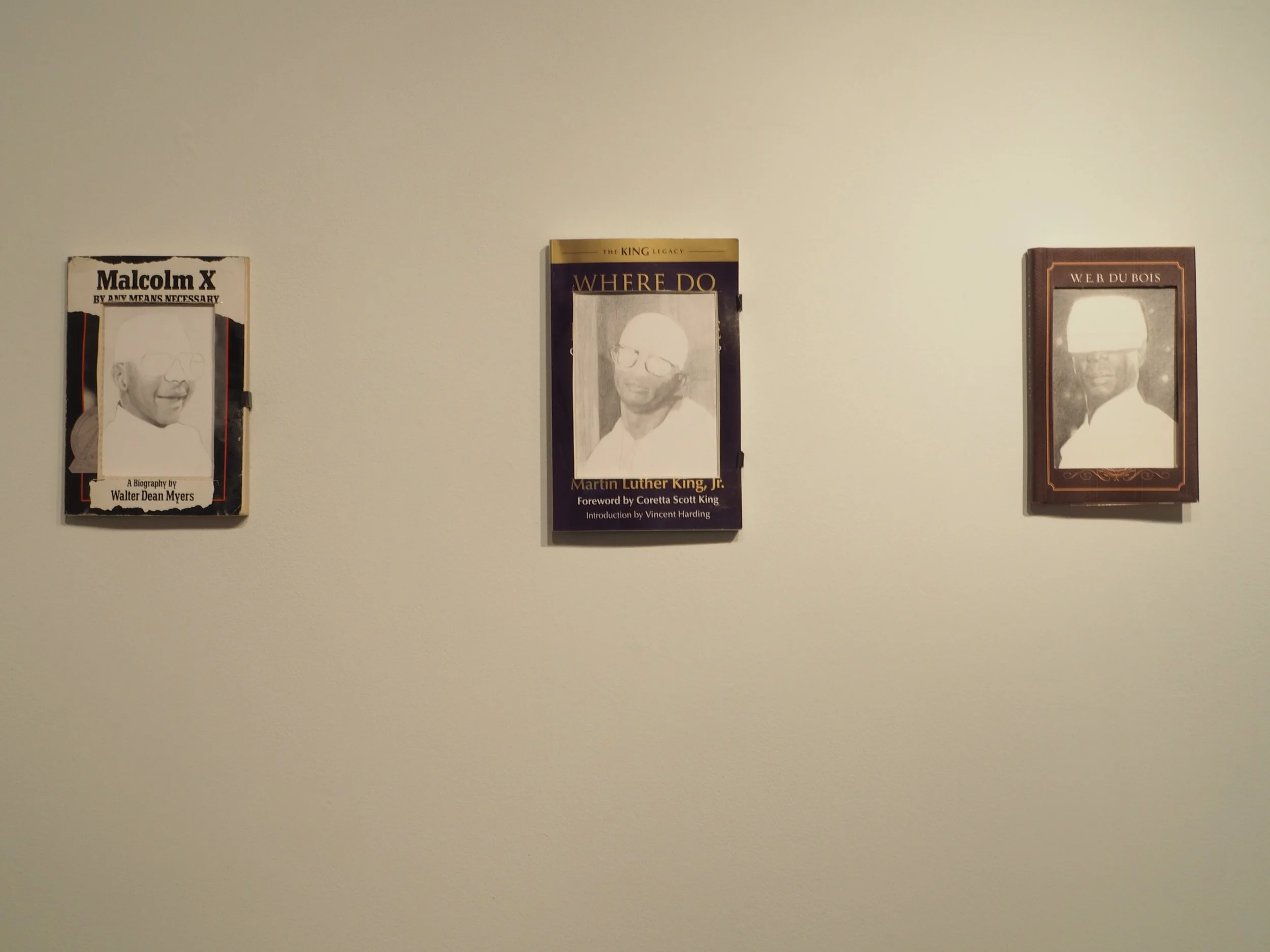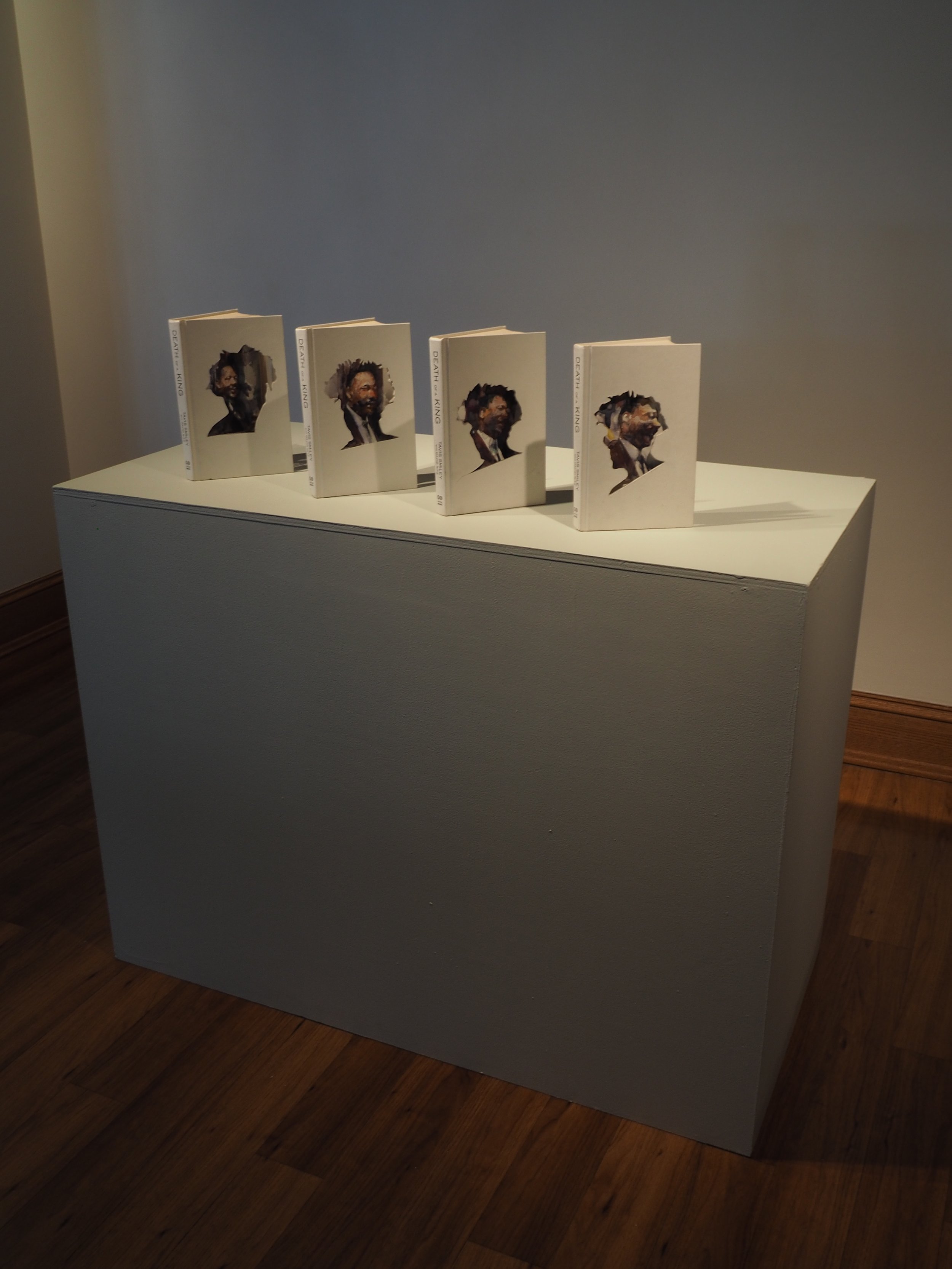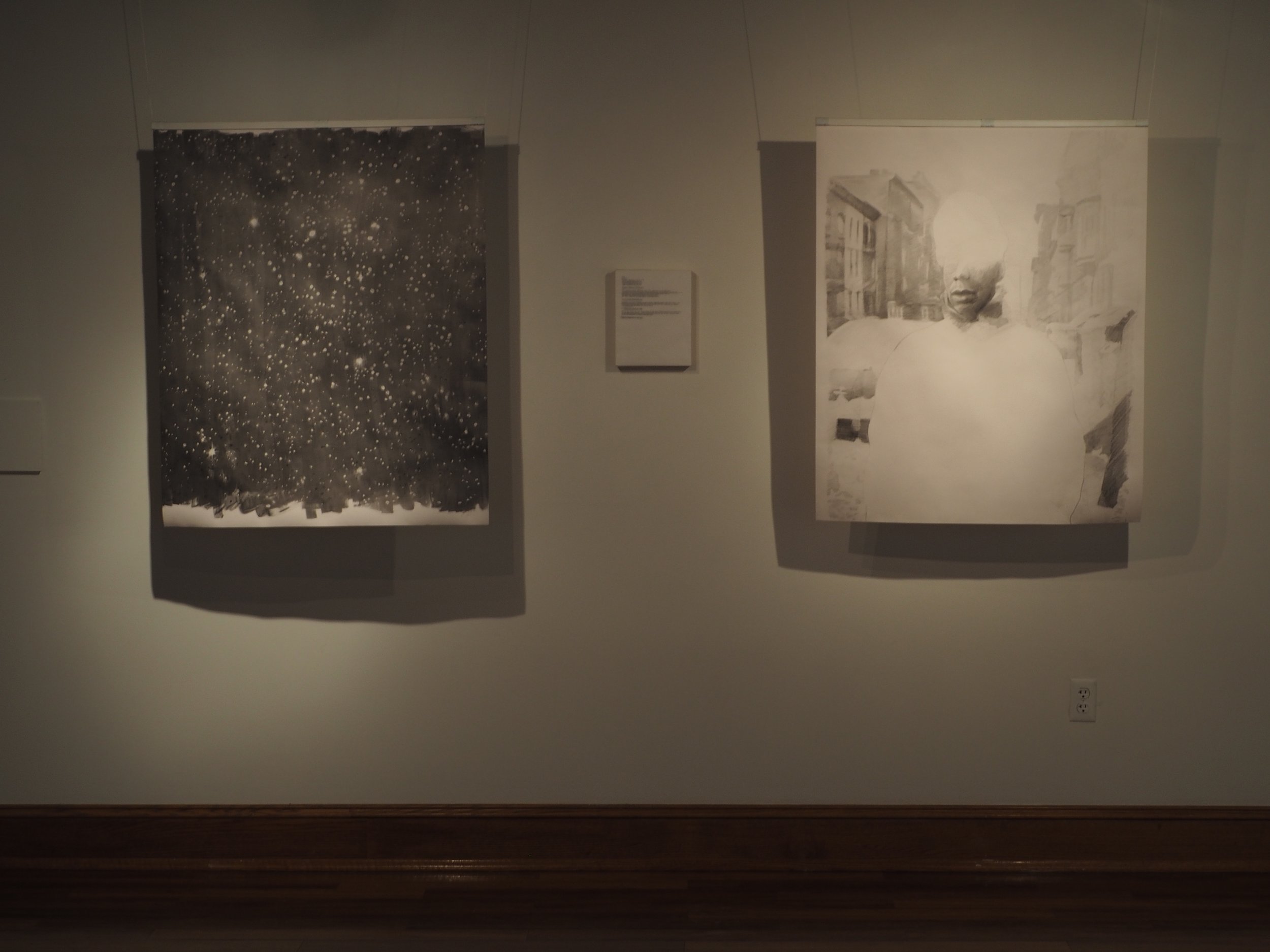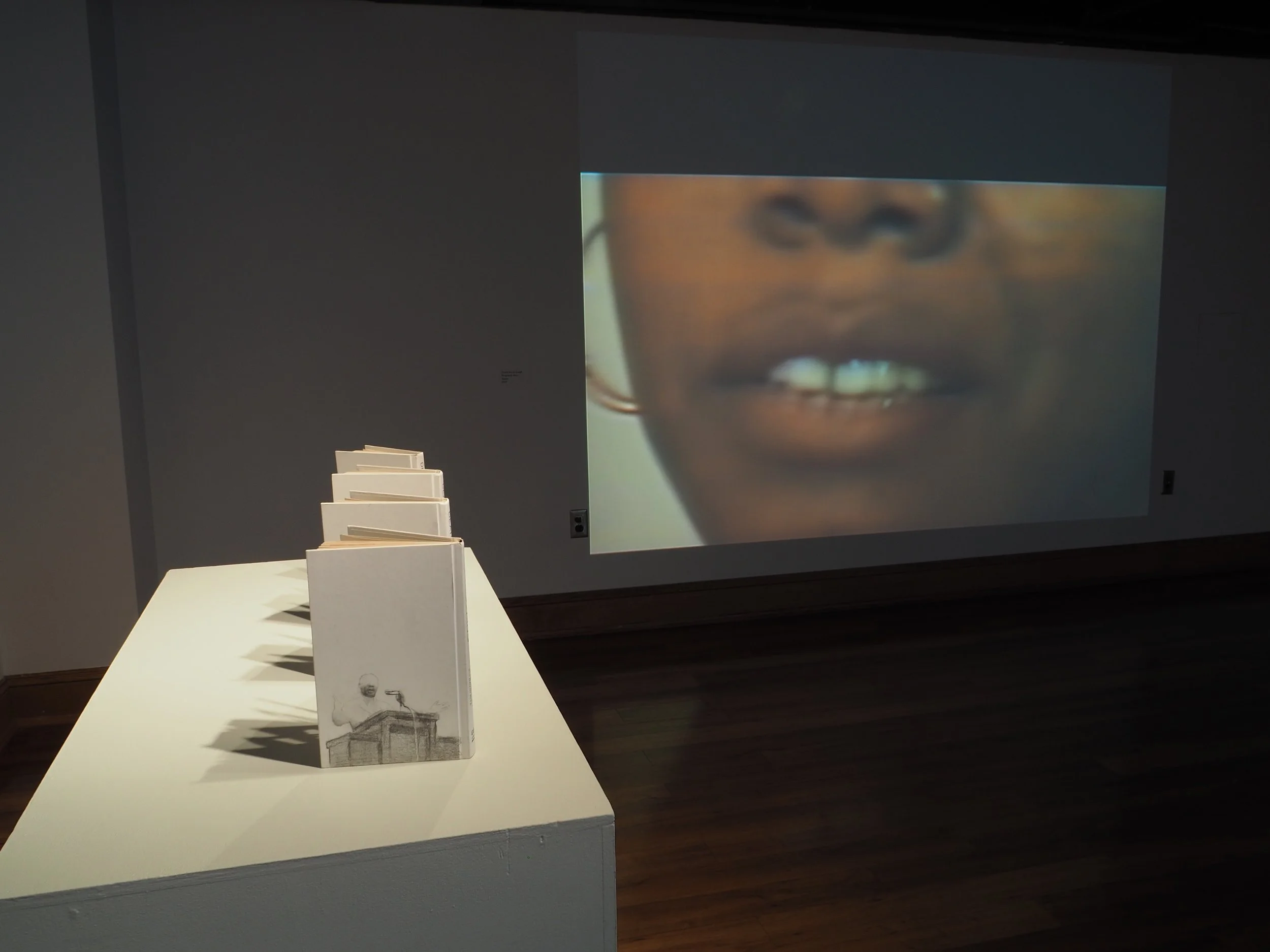Justin Bryant
Justin Bryant: Lingering in the Minor Key
Jan 21, 2019 - Feb 15, 2019, RCAH LookOut Art Gallery, MSU
Press: Larry Cosentino, “Cutting in and Cutting Out,” Lansing City Pulse
For the 8th Annual RCAH Perspectives on African American Experience: Emerging Visions Residency and Exhibition, the LookOut! Gallery presents a solo exhibition of works by Justin Bryant. In found objects, painting, drawing, printmaking, and video, Bryant employs strategies of negation to explore the gaps that inhere in black archives and to suggest the fugitive and dissonant conditions of African diasporic identity.
Lingering in the Minor Key
by Tessa Paneth-Pollak
It is said that the musician and civil rights activist Curtis Mayfield tuned his guitar based only on the black keys of the piano. Thus his music was often, in the words of Dr. Cornel West, “lingering in the minor key.” In his solo exhibition for Emerging Visions, Justin Bryant takes this restriction of artistic means as a metaphor for black experience. In Bryant’s work, there is as much significance in the gaps and omissions—in the notes not hit, in the elements removed or not rendered—as there is in what we see.
Bryant re-draws photographs he finds in the archives in a French atelier style reminiscent of Georges Seurat, beginning with light tonal values and slowly working in the darker tones. He consistently omits the eyes and the nose from these otherwise carefully wrought portraits. Bryant then slices defiantly into books, partially removing their covers to reveal portions of their interiors. Bryant repurposes books as housings for his partial portraits, striking dissonant chords between image and text.
The face becomes a way for Bryant to explore what can be transmitted about black history and what is lost to historical record. In particular, Bryant isolates the mouth—the site of black speech and vocal performance—for study. He is driven in this study of the mouth by Maya Angelou’s poem “The Mask,” which explores the way submissive smiles and obliging laughs have served as survival tools for black Americans. As a housing for portraiture, book covers and the interiors they belie come to embody the painful disconnect between black appearance and black experience that Jordan Peele’s film Get Out (2017) has more recently dubbed “the sunken place.” Bryant’s choice to withhold the eyes of his figures detaches facial expression from psychic interiority in a way that creates troubling ambiguities: Is the mouth in Ha laughing, raising its voice in protest, or screaming in pain?
Assembled here is a portrait gallery in the minor key—one that remains skeptical about the ability of portraiture to tell history. Into this counter-archive, Bryant interweaves minor figures that unmoor the normative values represented by major ones. Beside works about Martin Luther King Jr. and Malcolm X, we find a work dedicated to Bayard Rustin, who was sidelined within the civil rights movement (by Dr. King himself, among others) because of his sexuality and ties to the Communist Party. Another work insistently places the queer black painter Beauford Delaney into a tome on Modern Art. Rather than heroizing the face as a surface transparent to black history, Bryant reveals it to be a conflicted battleground of black subjectivity and selfhood, torn between the demands of survival and expression.
Bryant refuses to give his viewers the full picture. Instead, his works activate a series of reference points that the viewer must research. The artist’s subtractions are abstractions that force the viewer to work alongside him as a participant in the writing of black history and the construction of a new archive. Bryant invites us to join him in setting these historical figures into new stories.
Born in Stuttgart AR., Justin Bryant received his BFA in Studio Art from the University of Arkansas at Little Rock in 2012 and his MFA in Studio Art from Louisiana State University in 2018. He has taken courses at Penland School of Craft, Ox-bow School of Art and Artists’ Residency, the Art Students League in New York and he was also a participant at the Skowhegan School of Painting and Sculpture (’17). Justin’s recent work investigates the past and present imagery of African-Americans to construct a multi-contextual narrative of poetry, personal narrative, and history. Justin has shown at the Zoe B. Art Center in Chicago Illinois, Ten Gallery in New Orleans and he will soon be a featured artist at the Thea Art Foundation in North Little Rock, AR.
Photo by Steve Baibak
